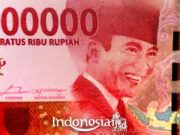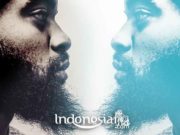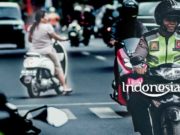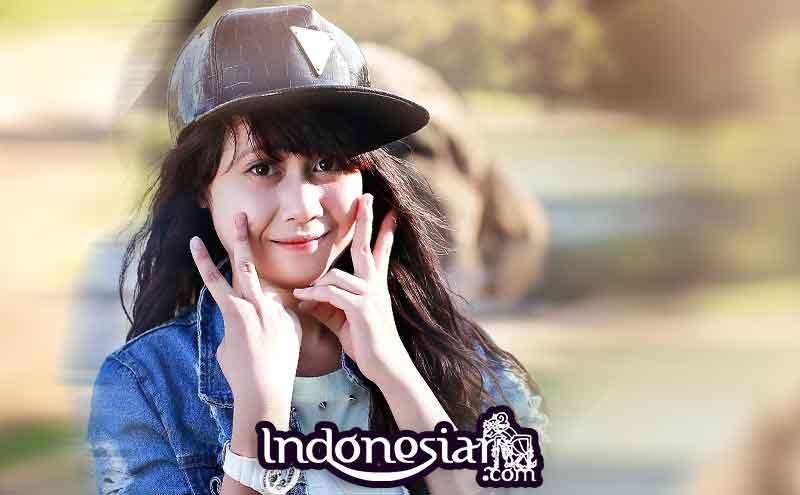Indonesia is a country that has a very large variety of regional dances. In fact, almost every region in the 34 provinces has its own regional dance.
Not only beautiful and can entertain anyone who witnesses them, Indonesian regional dances have their own characteristics and characteristics.
At this time we will review the most popular regional dances in Indonesia and their provinces of origin. Come on, see the list below.
1. Saman (Aceh)
Let’s start from the westernmost area in Indonesia, Aceh. One of the most popular regional dances in the Special Region of Aceh is the saman dance. Not only popular in the country, the saman dance is also known abroad.
Not infrequently, this dance, which is usually performed by many dancers at the same time, is performed in cultural events abroad.
In fact, UNESCO, a scientific, educational and cultural organization under the auspices of the United Nations, has included the saman dance in the list of cultural heritage that requires urgent protection from the United Nations Educational, Scientific and Cultural Affairs Agency.
The saman dance movement is quite difficult to do because it requires speed, accuracy and solidarity.
To be able to dance, a group of saman dancers can practice for weeks or even months, you know, Toppers.
2. Tor Tor (North Tapanuli)
In the north of Sumatra Island, to be precise around Lake Toba, there are Batak tribes who have a regional dance called tor tor.
This dance is usually danced by the Batak people in various important rituals such as weddings, death parties, harvest thanksgiving to healing ceremonies for the sick.
When dancing Tor Tor, the Batak people are usually accompanied by a Mangondangi musical instrument which consists of 9 gondang (batak drum), Batak trumpets and flute. Tor tor dance movements are not complicated and relatively easy to learn because the movements are monotonous.
In today’s era, tor dancers usually include additional elements in their choreography.
3. Plate Dance (Minangkabau)
From the West of Sumatra Island, to be precise in Minangkabau, there is a plate dance which has beautiful and meaningful movements.
The plate dance is a symbol of giving offerings to the creator for the successful harvest.
However, nowadays the plate dance has been performed freely in various celebrations.
Plate dance is usually performed by 3 to 5 dancers who hold two to three plates in their hands and a small bell bracelet tied to the dancer’s feet.
This flexible and beautiful dance is usually accompanied by the strains of traditional Minangkabau musical instruments, namely the bong and the saluang.
4. Turuk Langgai (Mentawai)
The name of this dance is less well known than the names of other regional dances in this article.
However, as the Mentawai Islands became increasingly well-known as one of the tourist paradises and international-class water tourism destinations, Turuk Langgai gradually became widely recognized.
Turuk Langgai is a typical Mentawai ethnic dance inspired by the movements of animals such as birds, snakes, chickens to monkeys.
Turuk Langgai is usually performed with the accompaniment of traditional Mentawai musical instruments, namely the kajeuma and uliat drums.
5. Ronggeng Blantek Dance (Betawi)
The Betawi ethnic group also has a variety of regional dances that have been popular since the Dutch colonial era. One of the famous regional dances is Ronggeng Blantek.
This dance, which has a fast tempo and energetic movements, was originally presented as an opening for the Betawi folk theater, Topeng Blantek.
This dance, which is danced by female dancers, is usually performed with the accompaniment of popular Betawi musical instruments such as trumpets, trombones, baritones, drums, gongs, cymbals, and tehyan.
7. Mask Dance (Cirebon)
The mask dance is a traditional Cirebon dance which is very popular among all circles, both the court and the common people.
Because of its popularity, Sunan Gunung Jati uses this dance as a means of preaching when spreading Islam in West Java.
Mask dancers usually wear 5 different types of masks. Each mask has its own name and character.
The banner mask, for example, symbolizes a baby who is still clean from sin, while the pamindo mask is a knight, while the patih mask represents maturity.
8. Bedhaya Dance (Yogyakarta)
Yogyakarta is one of the regions in Indonesia which is rich in regional dances. One of the popular regional dances is the Bedhaya dance.
This dance, which is usually performed by female dancers, was previously performed only for the court.
This dance tells the story of a spiritual figure who is believed to be the ruler of the spiritual world on the north coast of Java, Nyi Roro Kidul.
Bedhaya dance displays a lot of graceful slow movements. Bedhaya Ketawang is played accompanied by a complete gamelan set.
9. Serimpi Dance (Yogyakarta)
Just like bedhaya, at first the serimpi dance was a dance that was only performed in the palace.
This dance is said to be performed when there is an important event in the palace such as a change of high officials.
Serimpi dance itself has many types, Toppers. For example, dream of parallelograms, serimpi of sailing babul, dream of bondan, dream of cloudy and dream of dhempel.
Usually, this dance is played by four dancers who symbolize fire, water, wind and land and dress like a palace princess.
10. Dance Gambyong (Solo)
From Central Java, to be precise in the city of Solo, there is a regional dance that has been known since the time of ancient Javanese kings, namely the gambyong dance. During its development, this dance continues to develop with various choreography.
This dance is actually rooted in tayub, a folk dance that is usually played at harvest festivals.
However, the court brought this dance and developed it into a dance that is flexible and full of beautiful movements that can anesthetize the eye.
11. Dance Reog (Ponorogo)
Reog dance is one of the original regional dances of Ponorogo, East Java, which has been worldwide. This traditional dance is played by a number of men wearing lion head masks crowned with peacock feathers. The weight of this large mask can reach 50 kilograms, you know Toppers.
This traditional dance is said to have been created by Ki Ageng Kutu, a servant of the last Majapahit king, Bra Kertabumi. Ki Ageng Kutu, who later rebelled against the king, used this dance as a satire for the king, who he considered corrupt and under Chinese influence.
This is shown by the property of the lion barong which represents the king and the peacock feathers on his head which symbolize Chinese influence.
12. Jaran Kepang (Ponorogo) dance
This regional dance is part of the Reog dance that we have discussed above. Jaran braid dance is a type of dance that is spread in a number of areas on the island of Java. Some call it lumping horse dance or jatilan dance.
This dance, which uses woven bamboo and animal skins shaped like horses, tells of the brave Majapahit warriors.
One of the uniqueness of this dance is that the players can experience a trance and perform dangerous actions such as eating pieces of glass or peeling a coconut using their teeth.
7. Mask Dance (Cirebon)
The mask dance is a traditional Cirebon dance which is very popular among all circles, both the court and the common people.
Because of its popularity, Sunan Gunung Jati uses this dance as a means of preaching when spreading Islam in West Java.
Mask dancers usually wear 5 different types of masks. Each mask has its own name and character.
The banner mask, for example, symbolizes a baby who is still clean from sin, while the pamindo mask is a knight, while the patih mask represents maturity.
8. Bedhaya Dance (Yogyakarta)
Yogyakarta is one of the regions in Indonesia which is rich in regional dances. One of the popular regional dances is the Bedhaya dance.
This dance, which is usually performed by female dancers, was previously performed only for the court.
This dance tells the story of a spiritual figure who is believed to be the ruler of the spiritual world on the north coast of Java, Nyi Roro Kidul.
Bedhaya dance displays a lot of graceful slow movements. Bedhaya Ketawang is played accompanied by a complete gamelan set.
9. Serimpi Dance (Yogyakarta)
Just like bedhaya, at first the serimpi dance was a dance that was only performed in the palace.
This dance is said to be performed when there is an important event in the palace such as a change of high officials.
Serimpi dance itself has many types, Toppers. For example, dream of parallelograms, serimpi of sailing babul, dream of bondan, dream of cloudy and dream of dhempel.
Usually, this dance is played by four dancers who symbolize fire, water, wind and land and dress like a palace princess.
10. Dance Gambyong (Solo)
Image source: rachnasandika
From Central Java, to be precise in the city of Solo, there is a regional dance that has been known since the time of ancient Javanese kings, namely the gambyong dance. During its development, this dance continues to develop with various choreography.
This dance is actually rooted in tayub, a folk dance that is usually played at harvest festivals.
However, the court brought this dance and developed it into a dance that is flexible and full of beautiful movements that can anesthetize the eye.
11. Dance Reog (Ponorogo)
Reog dance is one of the original regional dances of Ponorogo, East Java, which has been worldwide. This traditional dance is played by a number of men wearing lion head masks crowned with peacock feathers. The weight of this large mask can reach 50 kilograms, you know Toppers.
This traditional dance is said to have been created by Ki Ageng Kutu, a servant of the last Majapahit king, Bra Kertabumi. Ki Ageng Kutu, who later rebelled against the king, used this dance as a satire for the king, who he considered corrupt and under Chinese influence.
This is shown by the property of the lion barong which represents the king and the peacock feathers on his head which symbolize Chinese influence.
12. Jaran Kepang (Ponorogo) dance
This regional dance is part of the Reog dance that we have discussed above. Jaran braid dance is a type of dance that is spread in a number of areas on the island of Java. Some call it lumping horse dance or jatilan dance.
This dance, which uses woven bamboo and animal skins shaped like horses, tells of the brave Majapahit warriors.
One of the uniqueness of this dance is that the players can experience a trance and perform dangerous actions such as eating pieces of glass or peeling a coconut using their teeth.































